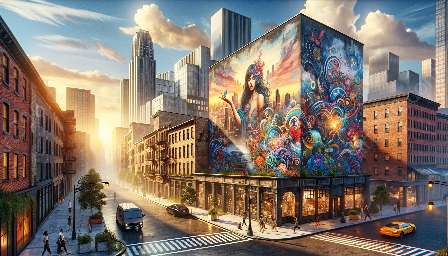Many urban areas around the world are using street art as a tool for promoting social equality and inclusion. This art form is not only visually appealing but also serves as a powerful medium for addressing social issues and fostering a sense of community.
Street art can be a catalyst for change, often highlighting marginalized voices and shedding light on social inequalities. By bringing art to public spaces, urban regeneration initiatives can create a more inclusive environment that celebrates diversity and encourages dialogue.
The Role of Street Art in Urban Regeneration
Urban regeneration efforts aim to revitalize and rejuvenate communities, often focusing on neglected or underprivileged areas. Street art plays a pivotal role in this process by transforming dull and uninspiring spaces into vibrant, engaging environments that resonate with local residents and visitors alike.
By incorporating street art into urban regeneration projects, communities can reclaim their public spaces and create platforms for expression, ultimately promoting social equality and inclusion. This form of artistic expression has the power to transcend social barriers and bring people together, fostering a sense of belonging and unity.
Fostering Inclusivity and Diversity
Street art can be a reflection of society, showcasing diverse perspectives and championing inclusivity. Artists often use their work to amplify the voices of marginalized communities, drawing attention to issues such as discrimination, inequality, and social injustice.
Through murals, graffiti, and other forms of street art, urban spaces become canvases for promoting empathy, understanding, and acceptance. By embracing the cultural and artistic diversity within their communities, urban areas can cultivate a more inclusive environment that celebrates the richness of different backgrounds and experiences.
Empowering Local Engagement
When street art is integrated into urban regeneration initiatives, it not only beautifies the surrounding environment but also empowers local residents to engage with their surroundings more actively. Community involvement in the creation and appreciation of street art fosters a sense of ownership and pride, leading to greater social cohesion and a shared sense of responsibility for maintaining the urban landscape.
Conclusion
As society continues to strive for greater social equality and inclusion, the role of street art in urban regeneration becomes increasingly significant. By harnessing the power of this art form, communities can reshape their urban environments, amplify diverse voices, and promote meaningful dialogue around social issues. Through the lens of street art, urban areas have the potential to become vibrant, inclusive spaces that reflect the diversity and strength of their inhabitants.

